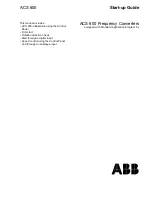
SPI Port
CS4953xx Hardware Users Manual
DS732UM7
Copyright 2008 Cirrus Logic, Inc
3-13
3.2.3.6 SCP1_IRQ Behavior
Once the BOOT_ASSIST_A (.ULD file) has been downloaded in accordance to Steps 1 through 8 in
“Host Controlled Master Boot” on page 2-4
Section 2.2.2 “Slave Boot” on page 2-7
, the
SCP1_IRQ pin is functionally enabled.
The SCP1_IRQ signal is not part of the I
2
C protocol, but is provided so that the slave can signal that it has data to be
read. A high-to-low transition on SCP1_IRQ indicates to the master that the slave has data to be read. When a master
detects a high-to-low transition on SCP1_IRQ, it should send a Start condition and begin reading data from the
slave.
SCP1_IRQ is guaranteed to remain low (once it has gone low), until the falling edge of SCP1_CLK for the last bit of
the last byte to be transferred out of CS4953xx (that is, the rising edge of SCP1_CLK before the ACK). If there is no
more data to be transferred, SCP1_IRQ will go high at this point. After going high, SCP1_IRQ is guaranteed to stay
high until the next rising edge of SCP1_CLK (that is, it will stay high until the rising edge of SCP1_CLK for the
ACK/NACK bit).
This end-of-transfer condition signals the master to end the read transaction by clocking the last data bit out of
CS4953xx and then sending a NACK to CS4953xx to signal that the read sequence is over. At this point, the master
should send an I
2
C
stop condition to complete the read sequence. If SCP1_IRQ is still low after the rising edge of
SCP1_CLK on the last data bit of the current byte, the master should send an acknowledge and continue reading data
from the serial control port. It should be noted that all data should be read out of the serial control port during one
cycle or a loss of data will occur. In other words, all data should be read out of the chip until SCP1_IRQ signals the
last byte by going high as described above.
3.3 SPI Port
The CS4953xx Serial Peripheral Interface (SPI) bus has been developed for 8-bit digital control applications, such as
those requiring microcontrollers. SPI communication is accomplished with 5 lines: Serial Chip Select (SCP1_CS),
Serial Control Clock (SCP1_CLK), Master Out/Slave In data (SCP1_MOSI), and a Master In/Slave Out data
(SCP1_MISO). Although the separate data I/O lines provide full-duplex capabilities, the CS4953xx chip only uses a
half-duplex SPI-bus. Each device on the bus may respond to one or more unique commands, and can operate as
either a transmitter or receiver. A device is considered the master in a transaction if it drives the CS pin of another
device, and is also mastering the SCP1_CLK line. A block diagram of the CS4953xx SPI Serial Control Port is
provided in
Figure 3-12. SPI Serial Control Port Internal Block Diagram
SPI Control /
Clocking
SCP1_BSY
SCP1_IRQ
LSB (Byte 0)
Byte 1
Byte2
MSB (Byte 3)
LSB (Byte 0)
Byte 1
Byte2
MSB (Byte 3)
MSB (Byte 3)
Byte 2
Byte1
LSB (Byte 0)
MSB (Byte 3)
Byte 2
Byte1
LSB (Byte 0)
7
6
5
4
3
2
1
0
Internal Bus
SCP1_CLK
SCP1_MOSI
SCP1_MISO
SCP1_CS
Summary of Contents for CS4953xx
Page 34: ...Softboot CS4953xx Hardware Users Manual DS732UM7 Copyright 2008 Cirrus Logic Inc 2 18 ...
Page 56: ...SPI Port CS4953xx Hardware Users Manual DS732UM7 Copyright 2008 Cirrus Logic Inc 3 22 ...
Page 58: ...CS4953xx Hardware Users Manual DS732UM7 Copyright 2008 Cirrus Logic Inc 4 2 ...
Page 118: ...Revision History CS4953xx Hardware Users Manual DS732UM7 Copyright 2008 Cirrus Logic Inc 9 30 ...
















































